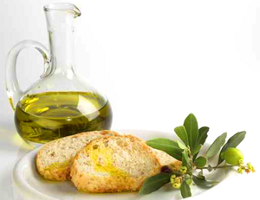Sensory evaluation of our oil
- Background
-
Like for wine, the organoleptic analysis is divided into three phases: visual, olfactory and gustatory examinations.
Density, clarity and color are assessed through visual examination.
However, that phase does not have such an essential role in the assessment of the quality of the oil itself and it is hardly ever taken into account.
The olfactory examination, instead, lets one appreciate the intensity of aromas and the typical aspects related to each cultivar, discovering hints which may range from fruity to herbal, floral, as well as more complex spicy notes.
Lastly, the gustatory examination helps describe the body of the oil, the intensity of flavor and other additional features.
The final considerations, fundamental for the best oil-food match, concern the overall balance, and its evolution to the palate.
The overall balance, as it is for wine, is determined by the balance between the hard parts (characterized by, among others, enjoyable bitter and spicy sensations) and soft parts, and it is very important to evaluate eventual imbalances towards either hard or soft notes, with the purpose of having the most correct oil-food match.
- Our oil
-
The San Gregorio Bio Organic Extra Virgin Olive Oil medium fruity is strong and intense.
The olfactory examination reveals vegetal notes reminding of artichoke leaves, thistles, tomatoes and green olives, followed by a light fruity note of apples, almonds and walnuts. The aftertaste is moderately spicy-bitter.
The taste is that of a persistent scent of vegetables and the spicy aroma of aromatic herbs.
San Gregorio Bio Organic Extra Virgin Olive Oil is characterized by a good balance between hard and soft parts, which makes it very agreeable and well-balanced to the palate.
- Gourmet Tips
-
The Extra Virgin Olive Oil of San Gregorio may accompany spelt, cereals and legumes soups, as well as the first courses of traditional Rome cuisine, red and white grilled meat, baked fish, and grilled vegetables.
We suggest trying it on the pumpkin risotto and mixed game stew.
